If you thought corporate portrait photography involves taking pictures of men in suits in offices, you would be only partially correct. Today’s corporate portrait needs to tell a story, illuminate an individual or create an image. There are multiple ways of achieving your client’s desired result.
Note: All following images were made with a Nikon D800, Nikkor 85mm 1.8 D and 50mm 1.4 G
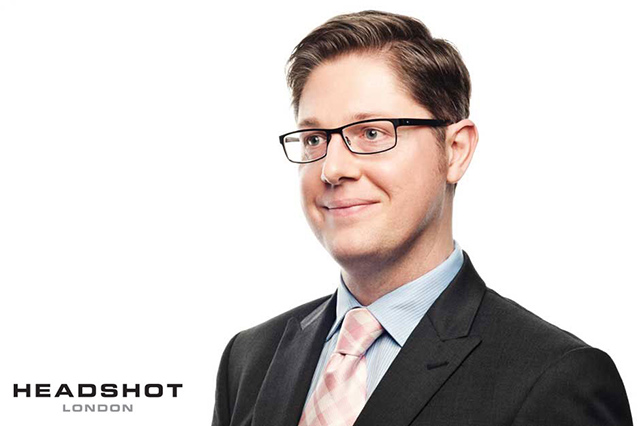
In this article, we’ll be looking at a variety of corporate photography styles, each of which may suit a different client or a different set of circumstances, paying particular attention to lighting considerations.
Studio Portraits
Outdoor Portraits
Business in Action – The Editorial Shot
Group Portraits
Environmental Portraits
Headshots
These six different styles can be used to create a wide variety of corporate photos, so it’s worth having several of each in your portfolio. Each one demands a different skillset and technique—so if you can master them all, you’ll become a well-rounded corporate photographer.
Studio Portraits (lead image)
The key to being a consistently good studio photographer, rather than scoring with the odd lucky shot, is to understand lighting. The benefit of studio portraiture is the ability to completely control how much and what type of light falls on your subject. Studio photography in corporate portrait photography, gives you complete control over the look of the image you are creating as you are able to modify the lights in all sorts of ways, such as the angle, distance from subject, and light output.
One of the most effective methods is to use two infrared flash lights, especially if you’re looking for clean, crisp portrait on a white background. The trick is to bounce your master flash onto your subject, while targeting your slave flash at the background wall. These will work even with cheap paper backdrops and, with a white background, the resultant shot can be easily incorporated into documents. Furthermore, you have a straightforward setup that works for when you need to take multiple portraits in a short space of time.
The size and volume of potential light modifiers makes it impossible to carry all the equipment available in a studio on location and so offers a broader spectrum of options in your images.
Outdoor Corporate Portrait Photography
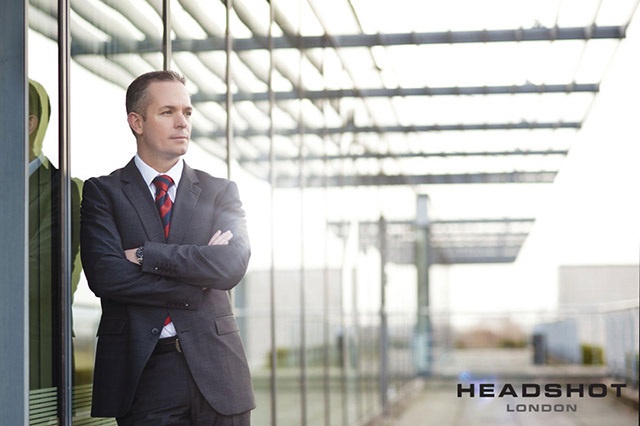
Camera settings: 85mm, f/2.8, ISO 320, 1/250 sec.
The outdoor portrait shot can give a much better sense of place than a studio shot—whether in highlighting your client’s place of business or in some other setting that has a particular resonance for the subject. But the downside is that you’ll have far less control over the lighting.
But by using multiple flashes, you can manipulate the light in such a way as to make your subject stand proud from the background—making sure your subject stands out of the scene. This effect is quite affective at dusk.
If the scene is too bright for the sort of shot you want, look for shadows from trees or doorways. Even dark jackets held close to the subject help reduce the light… methods employed on many, many shoots. Use what you can to get the shot!
To give your image an ‘old masters’ style of artistic lighting, use two flashes trained at your subject from different angles combined with an underexposed background.
Business in Action – The Editorial Shot
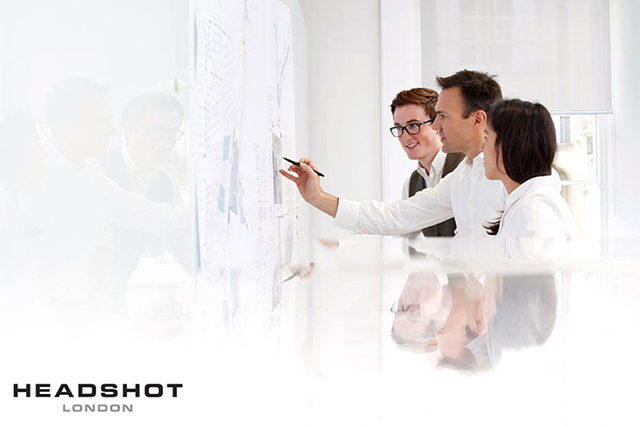
Camera settings: 50mm, f/6.3, ISO 640, 1/100 sec.
If you need to take a picture for a profile article, using a business-in-action shot can give far more insight into your subject than a face to camera view. Capturing an individual in action with the props of his or her workplace can be fascinating to people outside their industry. The key here is to focus on the composition first and then work out your lighting considerations.
Once you know where the subject will be situated and which tool/prop/machine or whatever to highlight, you can use a combination of natural light and flash to create a compelling portrait of not just the individual, but also the business activity. Experiment with diffused light and the play of light with shade to create atmosphere and focus attention to improve your corporate portrait photography.
Group Portraits
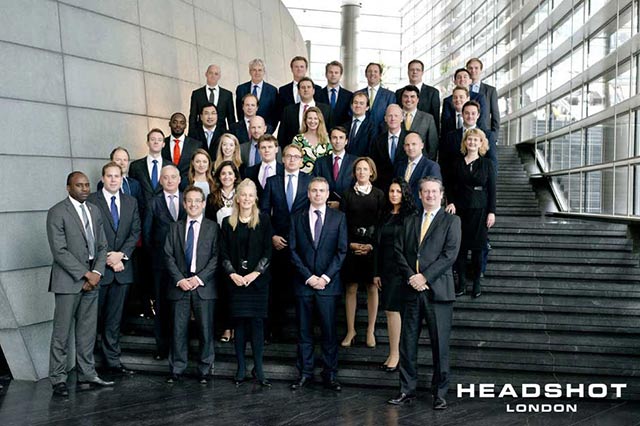
Camera settings: 50mm, f/5.6, ISO 1250, 1/125 sec.
Catching a satisfactory image of multiple subjects can be tricky for a number of reasons, the first being that you have more than one face to focus on. Keeping an eye on the aperture will be important in order to insure that everyone is in focus.
Space may be at a premium depending how many bodies you need to squeeze into the frame, so your choice of lens will be vital. Make sure you are prepared with a few lens – one of them will be right for the space.
Shoot more than you would normally as a group shot can be frustrating. You need all of your subjects to present their best expressions at the very same moment and you are lucky to get that in one or two frames, so shoot more and inspect the images with eyes closed and someone looking away or dribbling – it happens!
One way of tackling larger groups is to angle the camera down from above so people in the front row don’t obscure those behind. Then use your flashes to bounce light down from the ceiling. Have the faces angled upward so all will be suitably illuminated.
Environmental Portraits
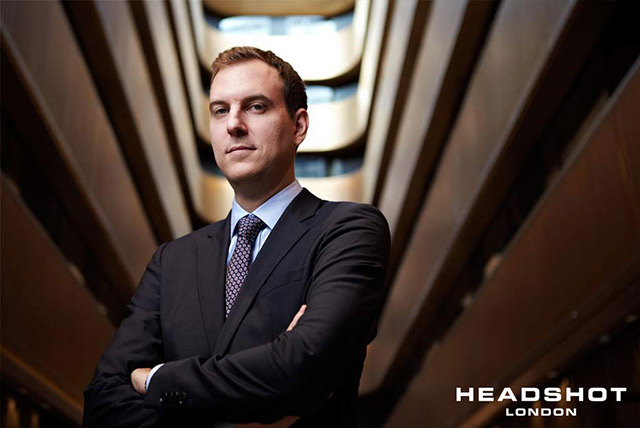
Camera settings: 50mm, f/2.8, ISO 320, 1/80 sec.
This means picking a relevant environment for your picture that is as much the focus of the shot as the person being photographed. In corporate photography this might mean in a factory, down a mine or in some other extraordinary location appropriate to the subject’s business.
If you get the opportunity to shoot in any of the above, you must treasure every second of it. It not only gets you out of the typical office shots, but provides a great experience that can be added to your portfolio.
The key concern on location is that equipment might need to be limited and you’ll probably have less control over the lighting. These days, offices have motion sensors that turn on mixed temperature lighting that cannot be controlled by your client, so be prepared.
Including the environment within corporate portraits can be the most successful, as they really do tell a story.
Headshots
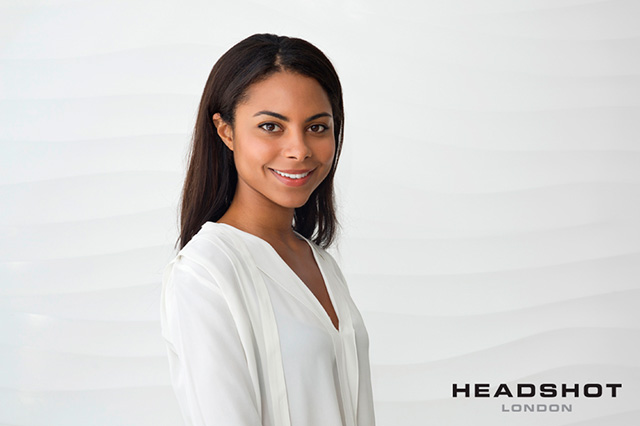
Camera settings: 85mm, f/9, ISO 250, 1/160 sec.
These are probably the most common of corporate portraits, but with some imagination, you can make your headshots stand out from the crowd. Try a different angle, an unusual lighting effect or cropping. If there’s any way of incorporating something from the business, try it out. Look for ways to create an image with impact. Your subject, of course, will want the most flattering picture possible, so diffuse your light to help hide fine lines and blemishes.
By Yana Locke, Headshot London Photography
Photos: © 2014 Headshot London Photography. All rights reserved.

Leave a Reply